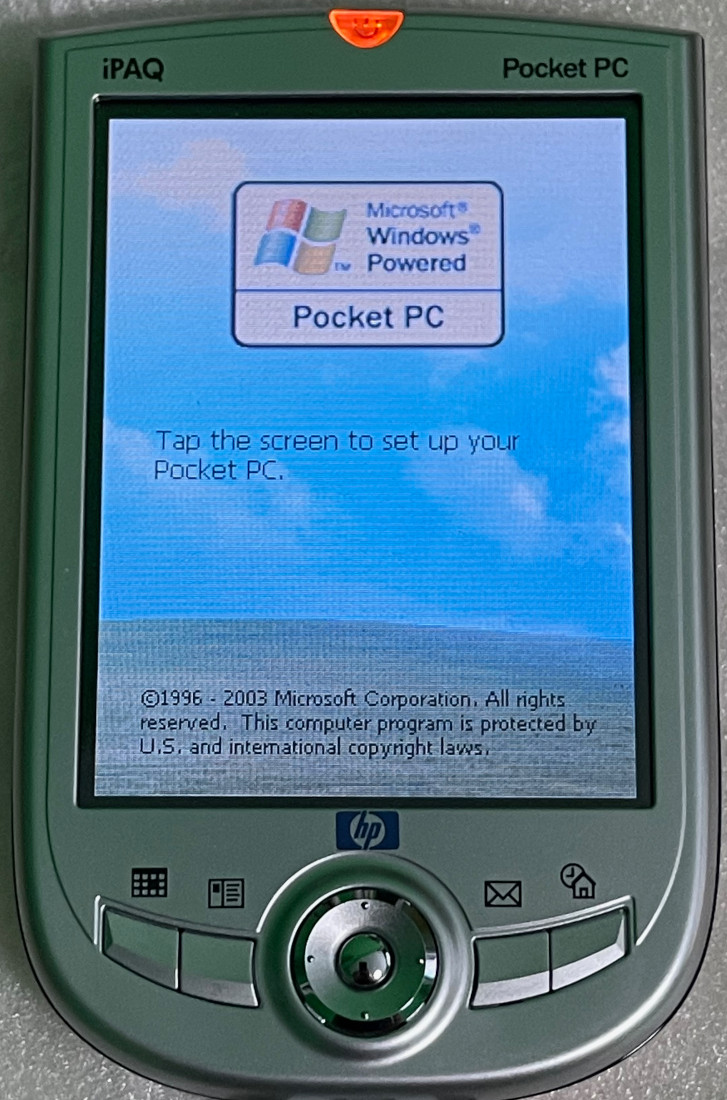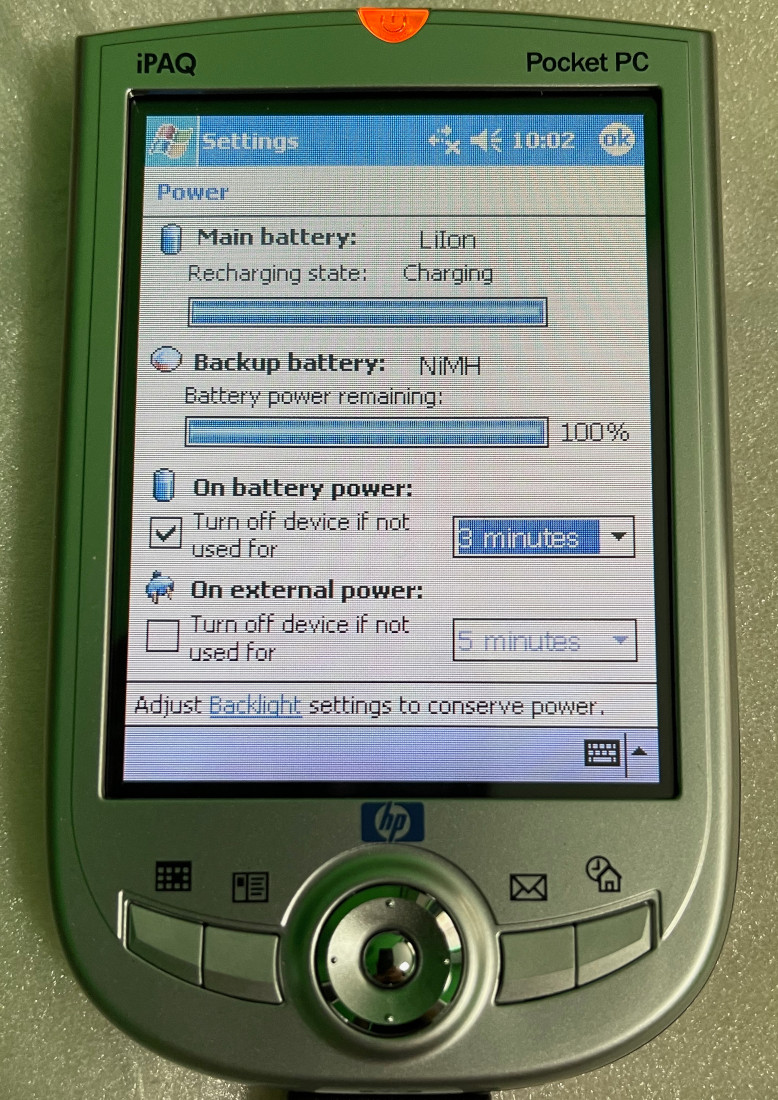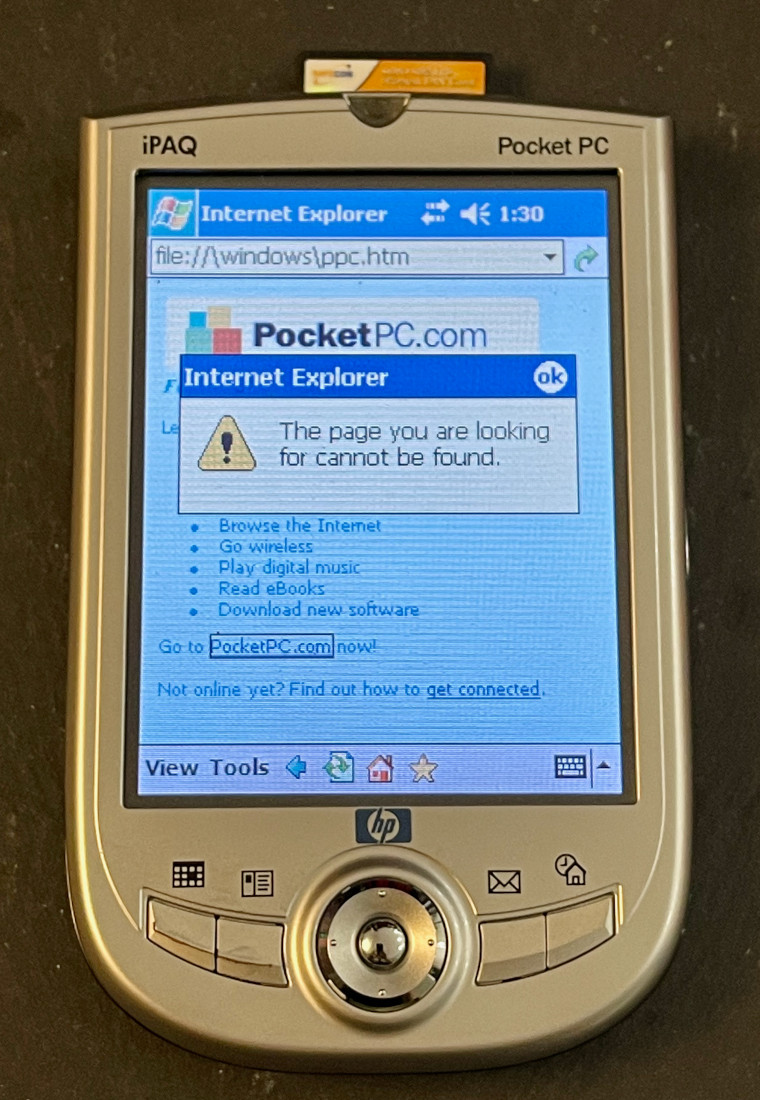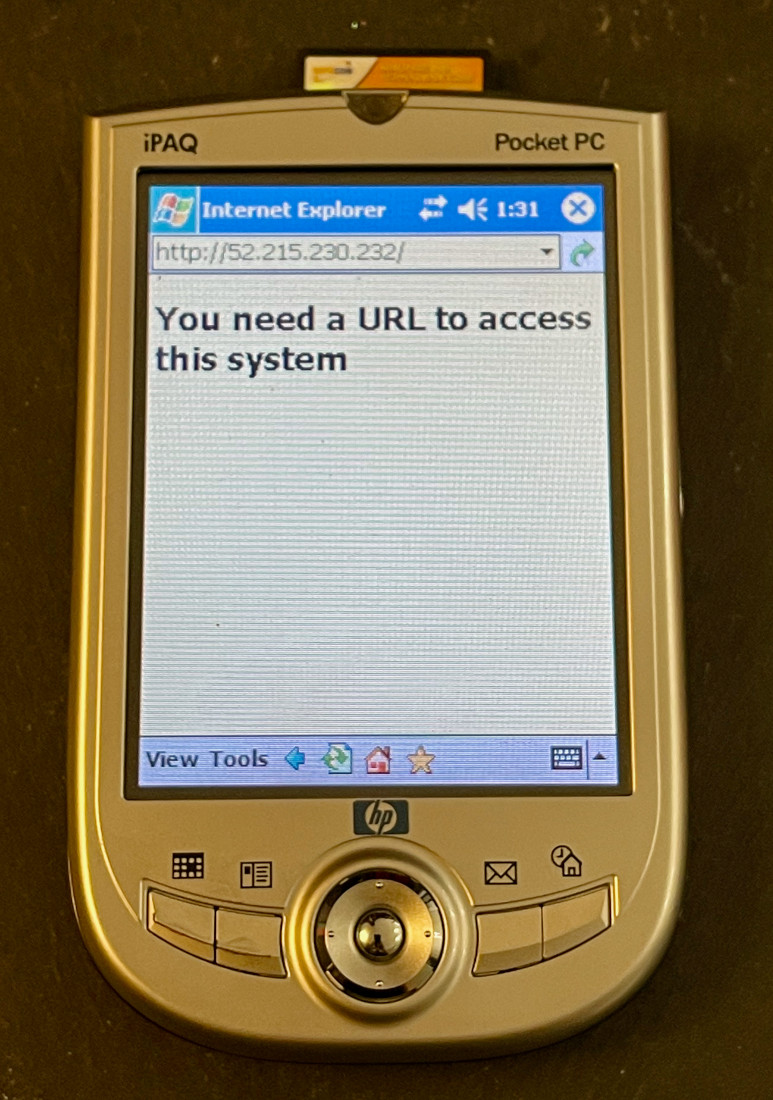HP iPAQ PDA
Throughout my teens I was in awe of the pocket PDA as it was the dream device for the businessman on the move. Mobile phones didn't have the same level of technology at that point, and so a mini PC that fitted in your pocket and could access full web pages while also running 3rd-party applications was the best that you could get. While we take for granted our phones of today, finding one of these priced for £5 was a trip down memory lane I couldn't resist...
Design
The device is just over 1cm thick, which at a time where Nokia 3310's were a common device and the game snake was about as good as it gets, is still impressive. A colour resistive touchscreen is paired with a self-contained stylus, a design still used in some of the devices available today. A dock also came with the device to allow it to be charged/synced to a PC while having it next to your desktop/laptop. It's a nice touch to it as it allowed you to use it as your calendar without having to pick it up/put it down, while doing other things with your PC (multitasking wasn't great back then).
The battery in the device was removable, with businessmen being known to carry multiple in case the battery goes flat mid-day. Bluetooth is also present though it wasn't realistically for using a headset or audio device, but instead for syncing contacts with your phone and if you had a compatible device, being used for internet on the move. The device also has an infrared port for the same level of syncing using bluetooth, though from my experiences as a teenager this rarely worked well.
From an OS perspective it was powered by Windows Pocket PC, which credit to its creators was actually quite snappy given the hardware at the time (not to mention the lack of storage/RAM). It came with some built-in apps as part of the OS, but could also have additional apps installed (though the installation was often challenging given it required ActiveSync). There was (for some similar devices) efforts at porting Linux to these devices, though I recall trying it on one a long time ago and watching the window manager crash leaving nothing but a shell with no keyboard to type on.

Sleek, a colour touch screen, fitting nicely in your pocket
Condition and Health
The device was in pristine condition, with no scratches or markings and still in it's original packaging. Given how well it was packaged I doubt it was ever turned on. The most surprising part was the battery, which despite it being initially flat still holds a reasonable amount of charge after all this time. For the safety conscious readers, it was charged in a non-flammable place and left there for 3 days just in case, and the battery was checked for swelling before/after.

Surprisingly the battery still holds some charge and isn't swollen
WiFi
With this model there was no WiFi built in (though later versions had it), but it could be added with an SDIO card that slots into the top of the device. It's somewhat impractical (and does mean you can't use an SD card at the same time, but it does provide 802.11b access to a compatible WiFi network (providing you only want to use open networks or WEP-protected).
Getting it to connect to a modern network is a tricky affair... Even when creating a WEP-protected network (and even an open network as it turned out) wasn't compatible. To get a network connection to the device I had to dig out a very old 802.11b access point that lacked any features that could be considered modern. In the end I did manage to get it connected, and was more surprised to see the device accepting an IPv6 address (which in truth I didn't think would be supported).

Modern websites won't load as technology has advanced
Web Access
As you might imagine with a device this old, attempting to access anything using HTTPS doesn't work on this device as the original SSL standard was deprecated many years ago and even TLS has undergone multiple revisions. You can still access the most basic of web pages however, and by basic I mean without any javascript or CSS. For the sake of testing I pointed it at the web host for my site (non-HTTPS) and it did connect and display the response. Trying a more complicated web page immediately fails, but its to be expected with a device this age.

No SSL support given its age, but a bare HTML page still loads
Nostalgia
There isn't the usual future section for this device as realistically it's a relic from my childhood that only serves to put a smile on my face every so often. For the cost of £5 I managed to lose myself in a childhood dream, while also reminding myself of where smartphones began. Despite it being a headache to get connected to a network, I have to admit it was worth it, even if only to see a simple HTML page being displayed, showing the device might be old but still functions even today :-)